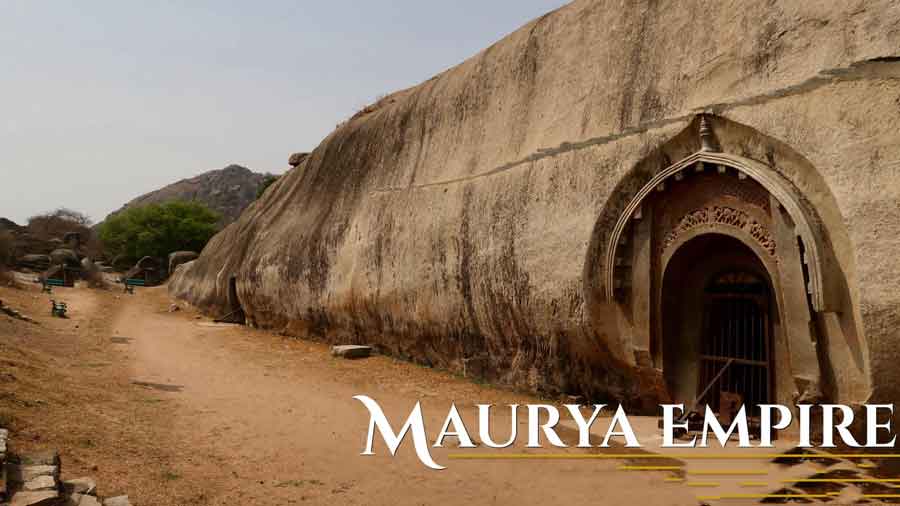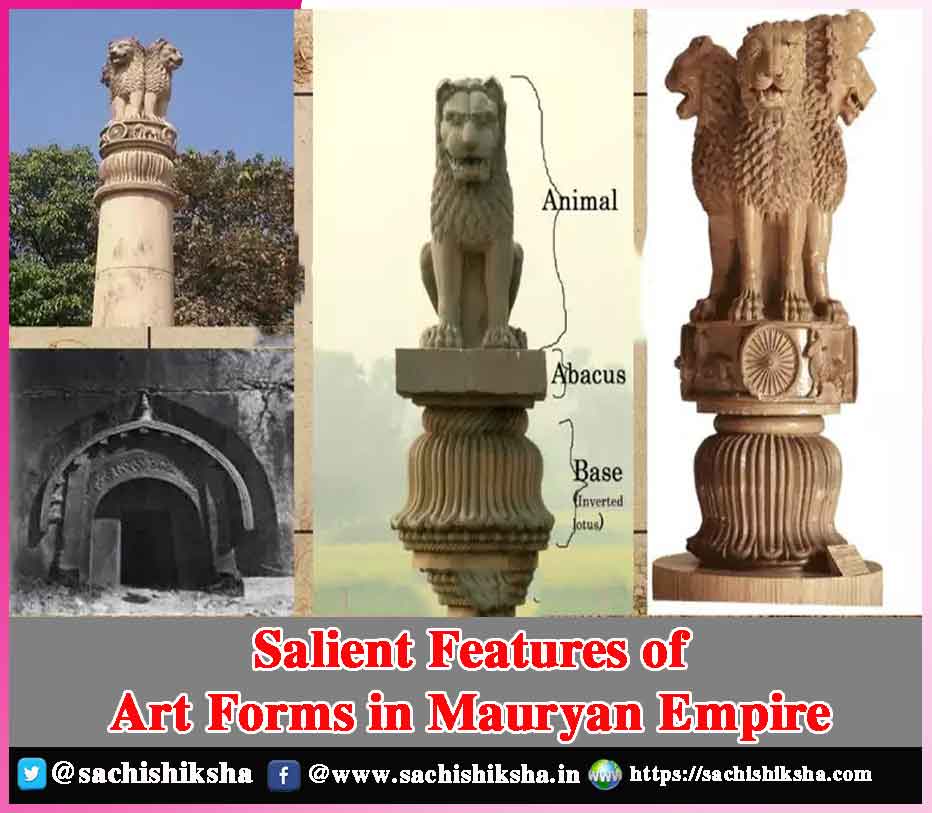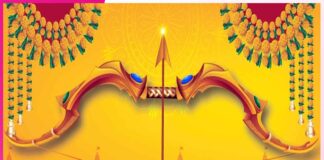Salient Features of Art Forms in Mauryan Empire
Introduction:- Art and crafts depict current civilizations’ history, emotions, ideas, level of knowledge, and competence. The history of art and craft began with the civilization of the Indus Valley, but it faded with passage of time. The stable art and craft history began with the Mauryan period and has continued since then. Mauryan art is a hybrid of local and diverse Indian art forms, as well as Iranian creative works. Nonetheless, the impact of Iranian art styles on Mauryan art is still being studied.
Also Read:
- Jute, The Fabric of India
- Art and Culture
- HANDICRAFTS OF INDIA
- The lost Civilizations
- History of Kohinoor Diamond
Table of Contents
Mauryan Architectural & Artistic Creations:-

Contribution of Ashoka:-
Ashoka accepted Buddhism, and the massive Buddhist missionary activities that aided in the creation of distinct sculptural and architectural styles. Several conspicuous characteristics of Mauryan period art and architecture that were related to the existence, occupations, and influence of common citizens have been depicted throughout India’s history. Because structures were not formed of stone during this period, architectural remnants were discovered between the Harappans and the Mauryas.
After the decline of the Harappan civilization, a prolonged gap was developed, and only massive stone sculpture, masterwork manufacture, and building occurred during the Mauryan period. As a result, Mauryan rule represents an important period in our cultural history. Art and architecture were at their peak during the Ashoka period and fell under the category of royal art. Different types of Mauryan period art and architecture that were tied to the lives, occupations, and patronage of common citizens. This is divided into Pagodas, Pillars, Caves, Royal residences, and Pottery.
Stupas With Solid Domes:-
During the Vedic period, tomb mounds of earth and brickwork constructed by the Vedic Aryans were recognized. Throughout the Mauryan period, particularly during the reign of Ashoka, countless stupas were built and spread around the kingdom. Stupas with solid domes were built in a variety of sizes out of either stone or brick. The Ashoka stupas were built to commemorate Gautama Buddha’s accomplishments. The enormous Stupa at Sanchi, such as the stupa in Bairat Rajasthan in the third century B.C. was built of bricks and through several modifications. The stupa’s inner surface was constructed with either terracotta or sun-burned bricks. The apex of the dome was adorned with a wood or marble umbrella symbolizing Dharma’s universal sovereignty. Parikrama was present as well, around the stupa.
Amravati Stupa:-
About 200 A.D., the Amravati stupa was constructed in the Lower Krishna Valley. Stupas of Nagarjunakonda Ghantasala was erected subsequently in South India. The stupa was made up of a cylinder with harmika and chhatra on summit, which remained relatively stable throughout despite minor modifications in its dimensions and form. Subsequent periods saw the addition of gateways.
The Pillars of Wisdom:-
The Pillars, or pillars of Wisdom, were among the most renowned and humble opinion masterpieces of Mauryan art. These pillars were not utilized for reinforcement and can be seen standing alone in columns. The core and head were the two fundamental components of the pillars. A shaft is a monolithic column constructed of one block of polished stone. The pillar’s refining art is quite unusual and appears to be made of metal. The capital sculptures are typically animal images carved sitting on a rectangular or round foundation. Abacuses are typically adorned with stylized lotuses.
The Lion Capital:-
The Lion Capital was the Mauryan period metropolis, located near Varanasi. As one of the best specimens of Mauryan art, it was created by Ashoka to commemorate Dhammachakrapravartanan, or the Buddha’s maiden preaching. Four Asiatic lions sit parallel to one another in the palace, representing strength, bravery, dignity, and assurance. The base of the artwork was cleaned, and the drums were present on the bell foundation, i.e.
Abacus depicts chakras or wheels in all 4 quadrants, with a bull, horse, elephant, and lion between every chakras. It has 24 spokes, and these 24 spoke chakra have been accepted as the Indian National Banner. An inverted lotus crown supports the round abacus. This was chosen as the National Emblem of Independent India; however it lacks the shafts, flower, and culminating wheel.
Rock Carved Caves:-
Rock carved caverns, rather than pillars, are another aesthetic feat of Asoka’s reign. The caverns on Barabar Hill on Gaya’s northwestern outskirts, as well as the caves on Nagarjuni Hill, the Sudama caves, and others, are instances of cave building. Ashoka gave Ajivika monastery the mountains of Barabar caves, while Dasharatha gave them three distinct caves at Nagarjuni hills. During Dasratha’s reign, the cave of Gopika was dug in a passageway form. The interior of the cave has been shined like a mirror.
Mauryan Mansion:-
The Mauryan period mansion had golden pillars with glittering vines and silver birds. All of the settlements were enclosed by tall walls with parapets, water canals, and lotuses and plants that grow in them.
Mauryan Coins:-
Karshapana or Panas were the names given to Mauryan coins. They were silver and weighed about 3.4 grammes. The coins were punched five times. A emblem with six arms and the sun was required, as were three other patterns. The contents of punches are vague, and they could not be decoded.
Conclusion:-
The Mauryan period’s art and culture were diverse. Religious, political, and cultural traditions shaped the distinctive characteristics of buildings and artwork. The testimony of the building lends credence to the state of the cultural position. Although the heritage of culture and artwork in the Indian subcontinent began during in the Indus Valley Civilization, it was lost throughout time. Only during the Mauryan Era did art and craft traditions survive.
It established new art practices, like as the custom of building Pillars, which began during the Mauryan Period. Mauryan art forms represent the country’s political and cultural union. It will always be appealing to those who appreciate Indian art and cultural heritage.















































